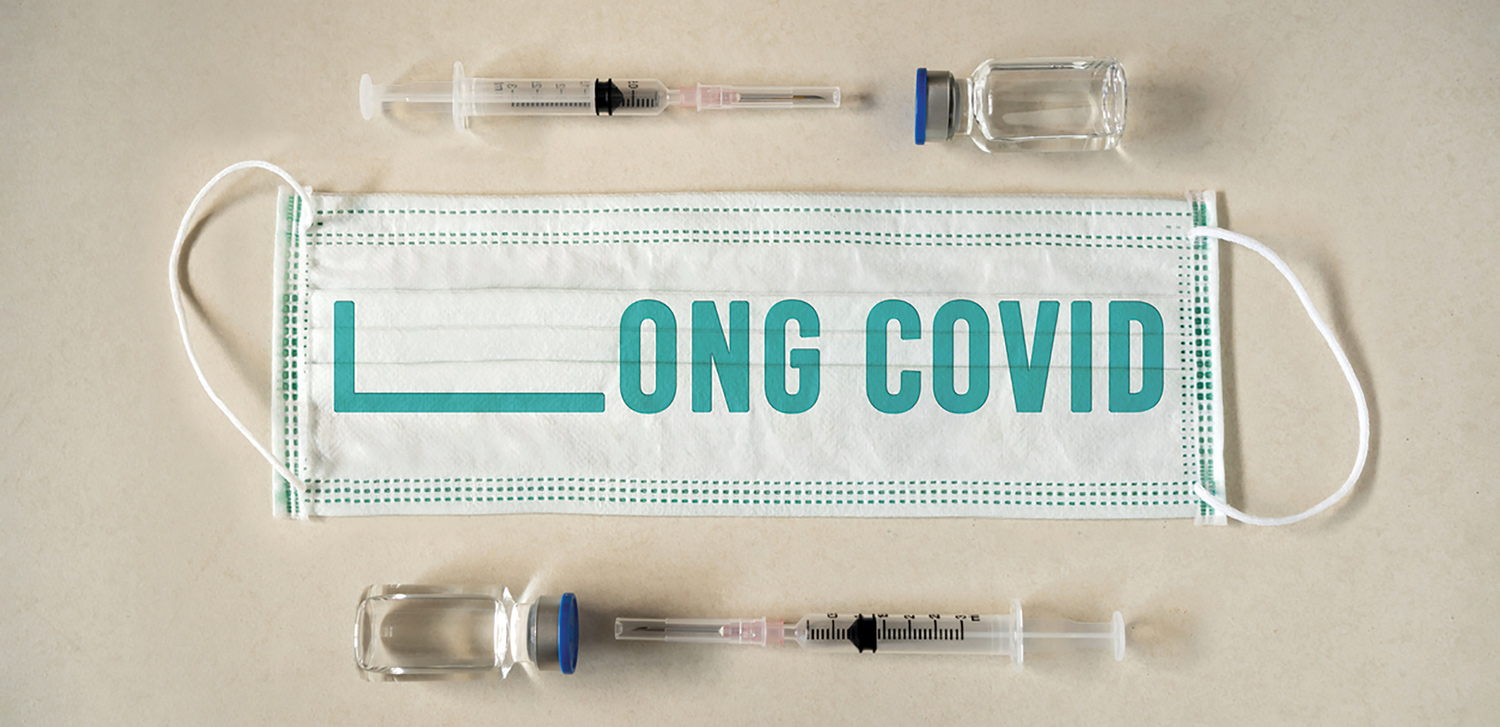 Long COVID remains largely a mystery and GPs are at the front line yet again. Eric Martin looks at why it is proving to be such a headache.
Long COVID remains largely a mystery and GPs are at the front line yet again. Eric Martin looks at why it is proving to be such a headache.
It is fair to say the emergence of long COVID has been an enigma for researchers, health care professionals and governments.
The Federal Government’s parliamentary inquiry found that GPs would continue to provide most of the care needed by long COVID patients, and therefore needed more education and support. In response, it has pledged to do more, including allocating $50 million for research.
And as our pandemic-fatigued population focuses on normal life without restrictions, Australians continue to be infected by SARS-CoV-2 at a rate of almost 4000 a day.
By April this year, there have been 11,352,930 COVID cases in Australia – almost half the population – and even if just 5% go on to develop long COVID, the addition of more than half a million patients would have a significant impact on demand for Australian healthcare providers.
Yet according to WHO, 10-20% of people infected will also acquire long COVID, and though estimates vary, “the highest percentage of the 65 million global diagnoses were between the ages of 36 and 50 years among non-hospitalised patients with a mild acute illness.”
In WA, 1,308,433 people (also nearly 50% of the population) have contracted COVID and just six months ago, on October 31, 2022, four days before Premier Mark McGowan ended WA’s Public Health State of Emergency, the Department of Health launched Perth’s first long COVID clinic, a pilot-program at Bentley Health Service.
A survey exploring the impacts of long COVID on West Australians was also announced and Senior Medical Adviser for Communicable Disease Control, Dr Paul Effler, explained at the time that the study would help shape WA’s response to long COVID, noting the need to gain “a better understanding of the risk factors and potential causes.”
“WA’s high vaccination rate when we were hit by the Omicron variant means information about long-COVID from other countries with lower vaccination rates, and which experienced different variant waves, is not likely to be applicable to us,” Dr Effler said.
The move followed the Australian Government’s launch of an official inquiry into the impacts of long-COVID and repeated COVID infections, chaired by paediatrician Dr Mike Freelander.
 An unknown quantity
An unknown quantity
According to the inquiry, “the cause or causes of long-COVID are unknown” and the condition has remained as equally difficult to diagnose as define.
“There is apparent and significant overlap between long COVID and some other chronic health conditions, such as chronic fatigue syndrome. However, the nature of any relationship between long COVID and other chronic health conditions remains unclear,” the committee reported.
This was highlighted in March, when Australian researchers from UNSW, Western Sydney University, and the University of Sydney published research in JAMA Network Open.
The team clinically examined a cohort aged 12-25, six months after they took a COVID test – 382 who tested positive and 85 who tested negative – and while 48.5% of the group who had been infected had long COVID symptoms, 47.1% of the COVID negative group presented with symptoms too.
The researchers noted that other factors, including psychosocial ones, could be behind the persistent symptoms and disability some young people were experiencing, and suggested that the WHO’s definition of long COVID, which has been adopted by most State healthcare systems, may not be accurate.
The latest round of consultation saw the Inquiry meet with federal bodies and Australians living with long-COVID at a public hearing on 17 February 2023 at Parliament House, followed by another in Melbourne on 20 February 2023.
At Malvern’s Cabrini Hospital, the Burnet Institute’s Director and Chief Executive, Professor Brendan Crabb, unpacked the latest information on long COVID and repeat COVID infections, and the hearing listened to peak bodies, medical researchers, and ventilation experts about the impact on patients, health workers and schools.
Dr Freelander noted at the time that it was also important to see how long COVID and repeat COVID infections were impacting Australia’s primary care capability.
While the committee acknowledged that primary care would “play an important and central role in supporting people with long COVID”, in the Issues paper, it also noted that serious challenges still existed in terms of implementation and integration.
Role of GPs
“The committee has heard about different approaches to managing long COVID, including through GPs, specialist long COVID clinics, and via multidisciplinary approaches involving allied health services,” it said.
“There is currently a lack of consistency in relation to the long COVID clinics between how they operate, including the referral processes, how they are funded, the services they provide, and their existence and accessibility across Australia.
“There also appears to be ambiguity as to whether and/or how these should be integrated into the healthcare system. Some submitters have also reported challenges seeking help from GPs, partly due to limited GP knowledge and/or acceptance of long-COVID as a condition, or lack of access to a GP in a timely manner.”
RACGP president Dr Jacqueline Small said that the consequences of repeated infection were still unknown, so doctors’ ability to provide effective treatment was hampered.
“There could be as many as 500,000 Australians living with long-COVID and yet we still do not have all the answers that we need to properly diagnose and treat it,” she said.
“And once diagnosed, the pathway to recovery is still unclear and there is an urgent need for research into long-COVID and its impacts – for some doctors, managing patients with long-COVID can feel like putting together the puzzle pieces without always having the full picture.”
The National COVID-19 Health Management Plan for 2023, released in December, acknowledged that “an important aspect of Australia’s COVID recovery will be management of long-COVID,” with the Government committing an additional $2.9 billion dollars in special measures and research in 2023.
“We need to investigate the Australia-specific, longer-term effects of the COVID pandemic. Research is required into the causes and impacts of long-COVID on individuals and the health system, particularly in the context of high vaccination rates and lower severity variants,” the National Plan stated, in agreement with WA’s Dr Effler.
“Understanding the effect on mental health, chronic disease management and cancer screening as well as delayed elective surgery will also be important.”
Significantly, the plan also noted that “infection with the Omicron variant was less likely to lead to long COVID than the Delta variant,” an observation supported by findings presented to the European Congress of Clinical Microbiology and Infectious Diseases in Copenhagen in April 2023.
The Swiss study, from the Cantonal Hospital St Gallen, found that while 67% of healthcare workers with Delta indicated long COVID symptoms, those first infected with Omicron were no more likely to report symptoms than healthcare workers who had never caught COVID.
Indeed, international and Australian studies published in 2023 have already started to answer some of the big questions posed by the committee – a crucial development given that leading Australian long COVID resources, such as the NSW COVID-19 Critical Intelligence Unit and National Clinical Evidence Taskforce on COVID-19, depend on weekly updates in research to inform doctors and clinical practice.
 Complex signs
Complex signs
One of the most comprehensive reviews from 2023, Long COVID: major findings, mechanisms, and recommendations, published 13 January revealed that “hundreds of biomedical findings have been documented, with many patients experiencing dozens of symptoms across multiple organ systems.”
The analysis, led by Professor Eric Topol, Director of Genomics at the US Scripps Research Translational Science Institute, highlighted that common new-onset conditions included cardiovascular, thrombotic and cerebrovascular disease, type 2 diabetes (where risk stayed elevated by 27% for up to 12 weeks), myalgic encephalomyelitis/chronic fatigue syndrome (ME/CFS), and dysautonomia.
“Long COVID is associated with all ages and acute phase disease severities, with the highest percentage of diagnoses between the ages of 36 and 50 years, and most long-COVID cases are in non-hospitalised patients with a mild acute illness,” Professor Topol said.
Significantly, the review showed that the incidence rate was estimated at 10-30% for non-hospitalised cases, 50-70% for hospitalised cases, and 10-12% for vaccinated cases, giving further impetus to the investigation of vaccine-based interventions.
Vaccination was associated with an overall 43% reduction in the risk of developing long COVID, and on Professor Topol highlighted that Paxlovid had just reported a 26% efficacy rate in initial long-COVID tests, with another study about to commence.
The greatest increase in healthcare use was attributable to just 1% of people who developed long COVID.
Solid data on recovery time also emerged from Israel in research published in January in BMJ, which found that people who developed long-COVID after a mild infection took an average of 12 months to recuperate, with most symptoms more prominent during the first six months.
Hair loss, chest pain, cough, muscle aches and pains, and respiratory disorders were usually resolved between six to 12 months, yet infection was “significantly associated with increased risk of loss of smell and taste, concentration, memory impairment, breathing difficulties, weakness, palpitations, streptococcal tonsillitis and dizziness throughout the study.
“The overall burden of conditions after infection across the 12-month study period was highest for weakness (an additional 136 people per 10,000) and breathing difficulties (107 per 10,000),” Dr Maytal Bivas-Benita from the KI Research Institute said.
Vax protection
“Importantly, the risk for lingering dyspnoea was reduced in vaccinated patients with breakthrough infection compared with unvaccinated people, while risks of all other outcomes were comparable.”
Evidence from other investigations also indicated the potential impact of other case severities and paths of infection on prolonging long-COVID’s impact.
“Symptoms can last for years, and particularly in cases of new onset ME/CFS and dysautonomia are expected to be lifelong,” Professor Topol clarified, and the review noted that the “overwhelming diagnostic similarity” between long-COVID and ME/CFS was highlighted by numerous studies.
Australian researchers from Griffith University confirmed this in March using an ultra-high field 7 Tesla MRI to map the physiological similarities between long COVID and ME/CFS. Their study, published in Frontiers in Neuroscience, revealed that the brainstem was significantly larger in ME/CFS and long-COVID patients.
Complications
“We also discovered smaller midbrain volumes were associated with more severe breathing difficulty in ME/CFS and long COVID patients,” lead author Dr Kiran Thapaliya said.
“Brainstem dysfunction in ME/CFS and long-COVID patients could contribute to their neurological, cardiorespiratory symptoms and movement disorder.”
In addition to dysfunctional signalling in the brainstem and/or vagus nerve, 2023 also reinforced findings that long-COVID could be attributed to multiple, overlapping causes, including “immune dysregulation, impacts on microbiota and virome, autoimmunity and priming of the immune system from molecular mimicry, and microvascular blood clotting with endothelial dysfunction.
A key discovery, however, was that “persisting reservoirs” of SARS-CoV-2 were identified in different tissues of patients with long-COVID.
Multiple reports following gastrointestinal biopsies also indicated the presence of SARS-CoV-2, along with an increased number of cytotoxic T cells.
One of the key themes to emerge was that researchers have consistently warned that governments should prepare for sustained healthcare demand thanks to the global impact of long-COVID.

